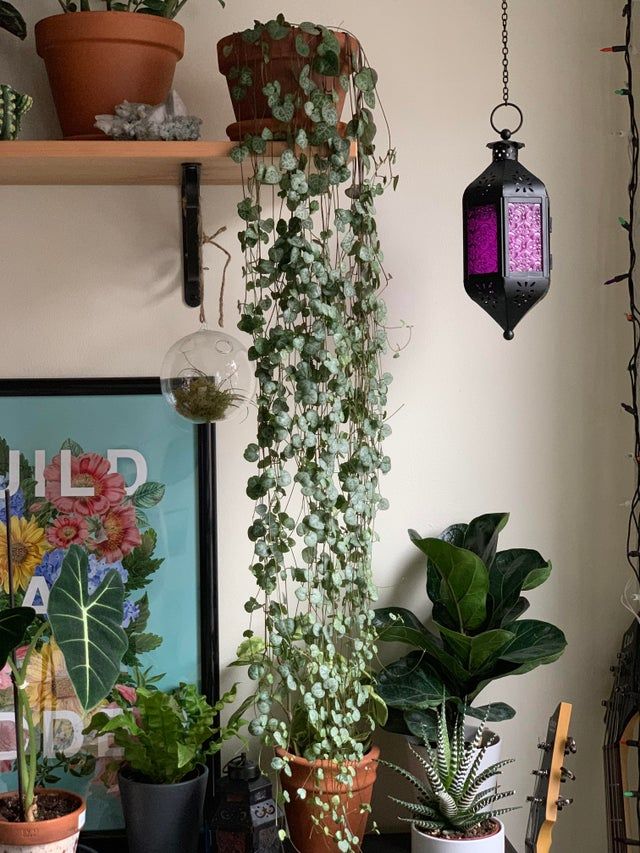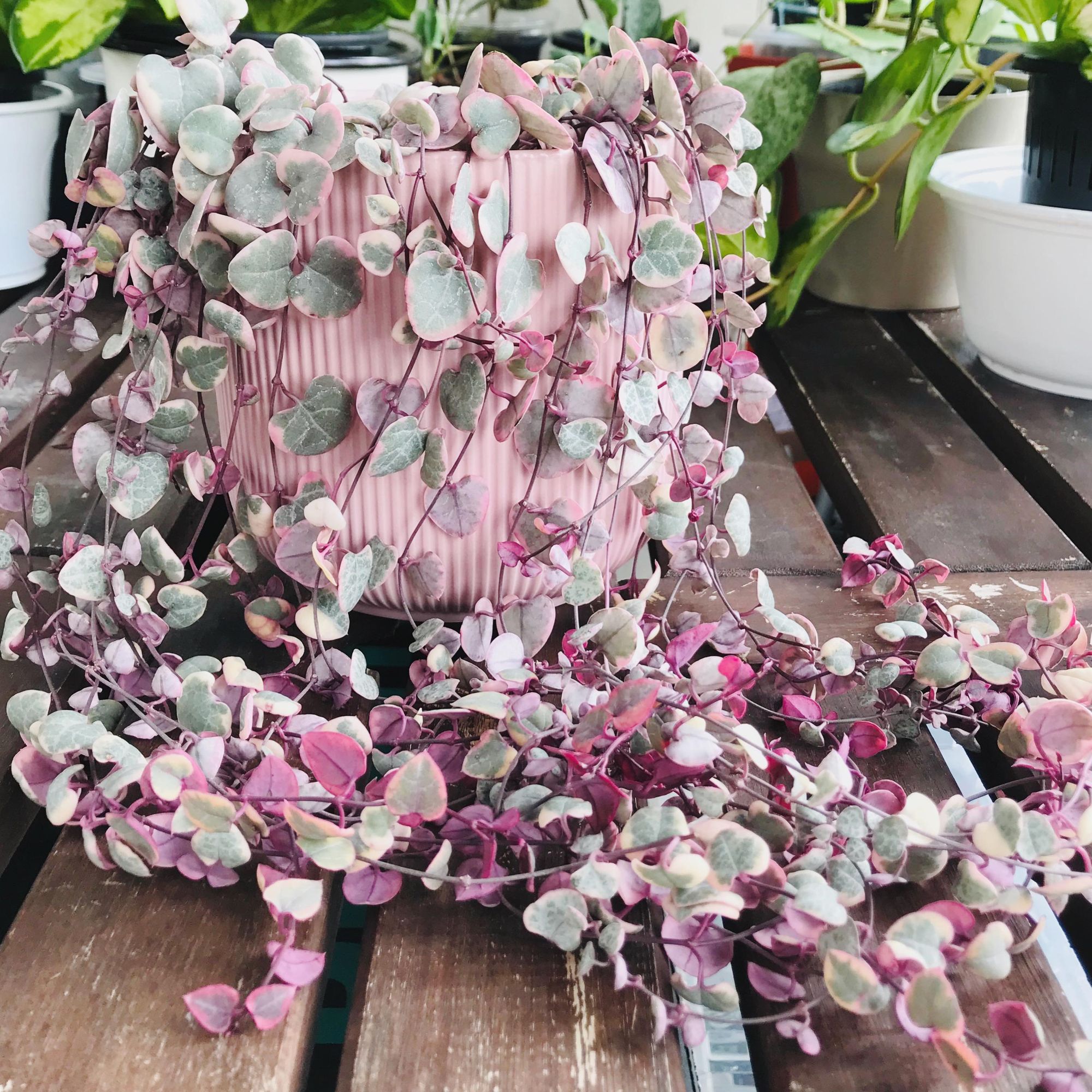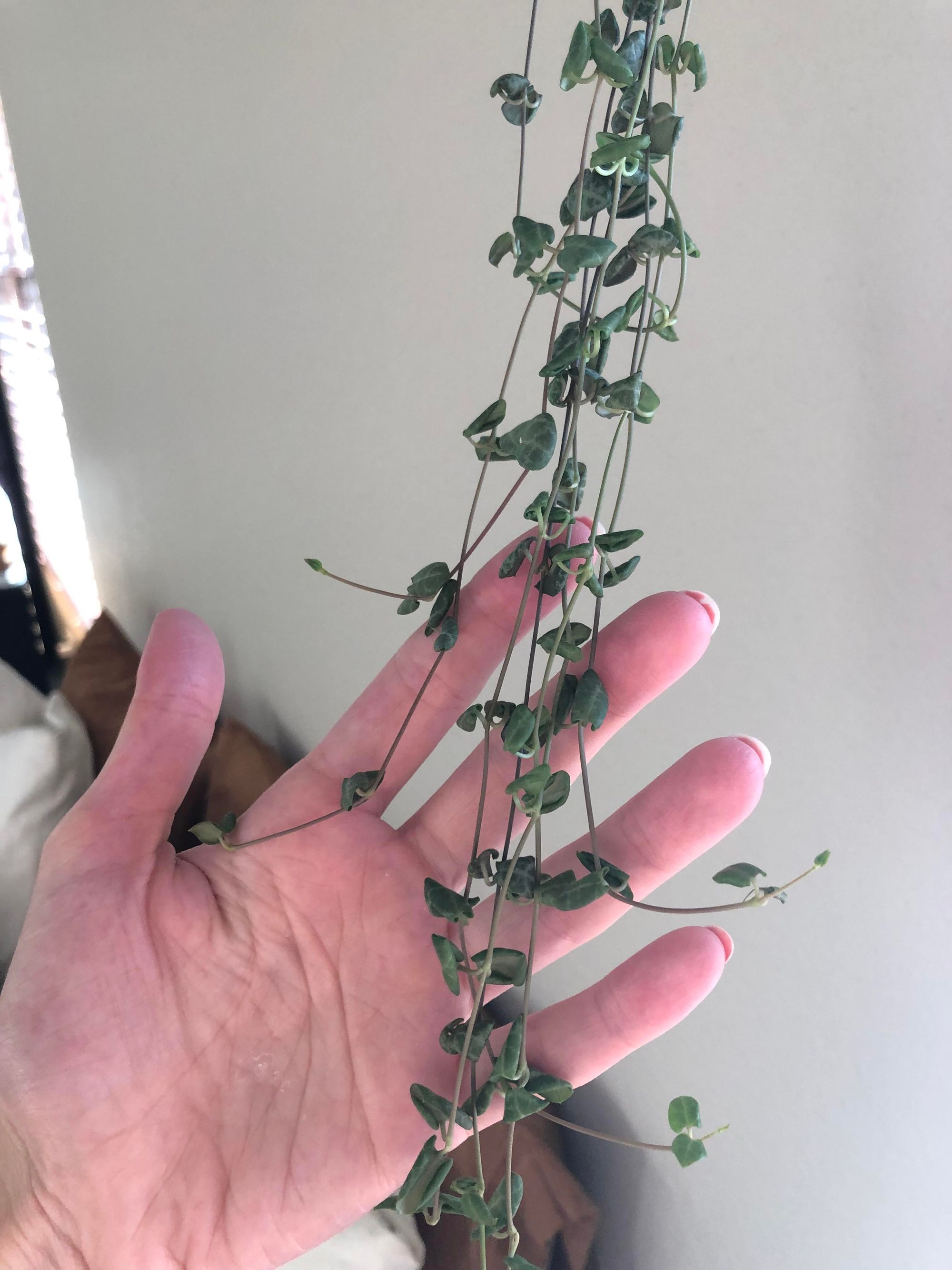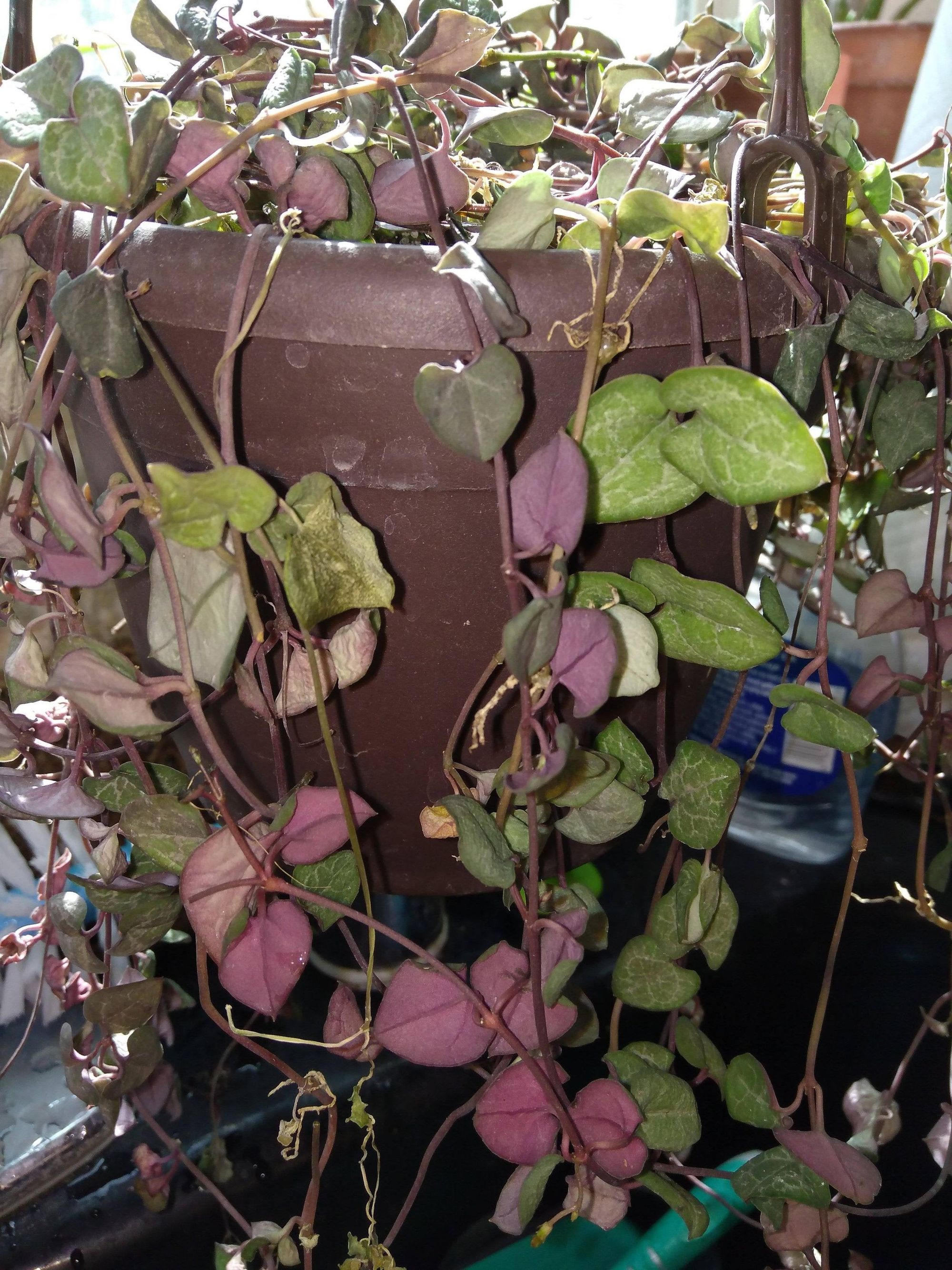Can String Of Hearts Take Full Sun?

Although it is a tropical plant, String of Heart cannot take full sun. In fact, the plant does not need direct sunlight to grow. It thrives better in shaded locations which makes it a perfect indoor plant. During summer or when the temperatures are too high, it is best to keep your plant in a shaded area for protection.
The String of Hearts plant (scientifically known as Ceropegia Woodii) is a type of creeping succulent plant native to South Africa. The plant’s delicate heart-shaped foliage is sensitive to extreme temperatures and can be scorched by direct sunlight. But that’s not to say the plant can only grow in the dark. In fact, the plant needs enough light to maintain its deep green color.
The unique light requirements can make caring for this plant a little challenging. But once you get a hang of it, you’ll find that the String of Hearts is a tolerant houseplant that is relatively easy to maintain. In this article, we will go over the light requirements of the String of Hearts plant and how to properly take care of it.
How Does Light Affect String Of Heart?
Light is one of the most important factors to consider when growing String of Heart as a houseplant (whether indoors or outdoors). Poor light condition is a common cause of death for this succulent plant.
Generally, the String of Hearts plant thrives better when it has access to bright indirect light throughout today. With sufficient supply of sunlight, the leaves of the plant will develop a dark green green color with variegated silver markings.
If the light supply is limited, the green color of the leaves will not be as dark and the plant may not develop variegations. This loss of variegation is irreversible and the plant will remain like this even if you move it to a location with better access to light. In poor light, String of Heart will not thrive properly and might die off.

How To Determine The Best Location For String Of Hearts In Your Home
Determining the best location for String of Hearts can be a little complicated. Although this houseplant can easily adjust to different light conditions, getting the lighting right can make a world of difference in how your plant grows. You will get healthy plants with great-looking leaves if ample lights hit the developing stems of the plant.
When it comes to placement, you should avoid sun-drenched south-facing windows with a lot of direct sunlight. While small doses of direct sunlight is good for your plant, too much of it can scorch the leaves. This leads to browned leaves with dry edges and may stunt the plant’s growth. Conversely, the plant is unlikely to thrive in a gloomy, poorly-lit room. insufficient sun exposure can lead to discoloration and stunted growth.
The ideal placement for a String of Heart plant would be just a few feet from a Southern or Western-facing window. Alternatively, you can place the plant directly on an eastern or northern-facing window.
If you’re considering the best spot to place your rosary vine plant, here’s a comparison of the best options you can consider:
Southern Window
The South-facing window tends to receive bright sunlight for most of the day. This makes it an excellent location for succulents that enjoy access to the full sun. For your String of Hearts, it is not recommended that you place the plant directly on a south-facing window with full access to scorching sunlight. Instead, you should position the plant a little distance from the window so that it gets medium light
East Facing Window
Placing your Chain of Hearts plants next to an east-facing window allows it to benefit from the morning sun every day. The rays of light are not scorching and it is suitable for plants with moderate light needs. You could also place it next to a west-facing window as long as it isn’t up against the hot window panes.

Can You Grow Strings Of Hearts In An Outdoor Location?
The String of Hearts plant can be grown outdoors in your rock garden, on a wall, or as a sprawling ground cover. However, if you intend to grow the plant outdoors, you have to pay attention to the light condition. This can be a little difficult since the outdoor space is not a controlled environment. Even the darkest shade outdoors will receive more light than the brightest corner in your home.
Generally, you should look for a spot where the plant can get up to 3 to 4 hours of bright indirect sunlight while also getting sufficient shade in the afternoon. The plant should survive all year long as long as you’re able to maintain the temperature at 60 degrees Fahrenheit or warmer and it isn’t exposed to scorching sunlight.
If your String of Hearts plant was originally planted indoors and you intend to move it outside, you should ensure that this is done gradually instead of abruptly. This will allow the plant to get acclimatized to the bright light and prevent sun damage. Another recommended approach is to grow the plant in a pot or container. This makes it easy to return the plant indoors for protection when the conditions are unfavorable.
Signs That Your String Of Hearts Is Not Getting Enough Light
Too much light isn’t the only risk that your String of Hearts plant might be facing. Sometimes, the problem might be that the plant isn’t getting enough light. You can tell that this is the case by simply observing the leaves of the plant.
If the light supply is poor, the color of the leaves will turn pale and they’ll start to grow wider apart than they normally would. To correct this, you should consider moving the plant to a brighter spot or using artificial lighting to supplement the light supply. If the light is coming from one direction, you should rotate the plant occasionally to ensure a balanced supply of sunlight to all the parts of the plant.

When To Use Grow Lights
The string of hearts plant is quite tolerant and it can adapt to low light conditions. However, you’ll find that exposing the plant to brighter light conditions will help it flourish better and improve its general appearance.
If the indoor light condition where you live seems to be poor and inconsistent, you can use artificial grow lights to supplement it. Using artificial lights also makes it possible to continue growing through the winter months when natural light from the sun isn’t sufficient to sustain the plant.
Should I untangle my String of Hearts plant?
String of Hearts are strange little plants. They wrap themselves around other objects in a seemingly haphazard way, but there is actually a method to their madness. Each heart-shaped leaf has tiny hooks on the end that allow them to cling to other plants or objects. In their natural habitat, they often grow tangled together in a jumble of vines. While this may look messy, it actually provides protection from predators and helps the plants to retain moisture. So, if you notice your String of Hearts getting a little tangled, don't worry - it's just their nature.
However, there is actually a good reason to untangle your string of heart plant on a regular basis, especially when grown indoors under not so ideal lighting conditions. The leaves of the plant need sunlight to photosynthesize and produce food for the plant. When the leaves are tangled, some leaves may block sunlight from getting to other leaves. As a result, the plant may not be able to produce enough food to support all of its leaves, and some leaves may die off.
By untangling the plant, you can ensure that all of the leaves get an equal amount of sunlight and can continue to thrive.
Conclusion
The String of Heart is an attractive houseplant that is quite easy to care for. Access to sunlight is an important requirement to grow this plant whether indoors or outdoors. However, there is a limit to the amount of sunlight the String of Heart can tolerate. Excessive levels of sunlight can scorch the plant and cause serious damage. If you’re planning to grow this plant, make sure it is positioned in a suitable environment where it can receive bright but filtered sunlight.